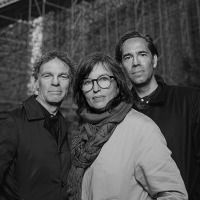The proposal integrates mobility networks such as cycle paths, cultural amenities, and ecological systems to create new connections between Huwei, its citizens, nature, and the river.

Aerial Anqingzhen wetland, rendering. Hoowave Water Factory by MVRDV.

Project description by MVRDV
An inland town of around 70,000 people located on the Beigang River, Huwei developed in the early 19th century around its sugar factory. While the sugar factory still operates, a connected alcohol factory was closed in the 1970s, becoming overgrown with tropical vegetation. Today the factory grounds, along with a dike built to protect the town from the river’s floods, form a significant barrier between Huwei and the Beigang River. The town also suffers from water pollution resulting from its urban and agricultural growth and is unprepared for the more extreme floods and droughts that will come as a result of climate change.
The design focuses on five goals: the new Huwei water system will be resilient, ecological, connected, cultural, and – given that completion is expected as early as 2026 – feasible. It proposes the addition of a series of localised, naturally cleaned water buffers throughout the city, with the majority placed on larger, publicly owned properties such as schools to streamline their implementation. It also aims to purify and naturalise the Anqingzhen Channel, an irrigation canal running through (and in places, beneath) the town that has come to serve as a polluted and smelly wastewater drain. The cleaned and naturalised canal provides the opportunity to open the disused portions of the factory, creating a park space in the heart of the town. By doing so, the Anqingzhen Channel can return to its former status as an important focus for leisure activities.
“By combining aquatic interventions with mobility and cultural attractions, we open the embankments of the river and canal to the town. Water buffers reduce runoff and help to increase biodiversity and to keep up with climate changes. Our design offers accessibility to riparian leisure spaces and cultural places, generating a more meaningful connection between people and nature… a wonderful resilience.”
Winy Maas, MVRDV founding partner.


Transforming the dike to the south of the town’s core into an accessible urban space, the design creates connections to the waterside, opening up the area between the river and the dike for further uses such as viewing platforms and sports fields. The uses in this area, now called Beigang River Park, are carefully considered along multiple criteria: split into multiple sections, they synergise with the town districts on the other side of the dike, while also taking into account the expected frequency of floods at various distances from the river. Three new cycle routes are also added that use the now-accessible dike as their spine: one 2.7-kilometre loop around the boundary of the sugar factory; one 6.4-kilometre loop along the dike and back along the riverbank; and one 8.4-kilometre loop that connects the heart of the town to the Pinghe Flood Detention Pond in the east.
In addition to the Beigang River Park, the plan elaborates on two more zones of specific focus. The proposal for the Anqingzhen Waterland shows how a naturalised Anqingzhen Channel can become part of a forested park in the disused zones of the Sugar Factory premises. Part of the city-wide flood control system designed to retain, purify, and reuse rainwater for leisure and biodiversity, the water levels of the Anqingzhen Channel here will vary according to the seasons, creating small islands for a number of leisure activities. Meanwhile, the Pinghe Lake design proposes that what is currently a flood detention pond can become an ecology hotspot and a destination on the edge of the city for walkers and cyclists.
Hoowave Water Factory gives water quality and health the same priority as culture and economy. Improved infrastructure and healthy ecological systems with integrated cultural amenities will make the river landscape more attractive, linking the city and the natural environment in a way that benefits all.













































